Curiosities
Hover over thumbnail to see a larger image
If a statue in the park of a person on a horse has both front legs in the air, the person died in battle; if the horse has one front leg in the air, the person was wounded but survived; if the horse has all four legs on the ground, the person was not wounded in battle. Although not all statues were made by this code.

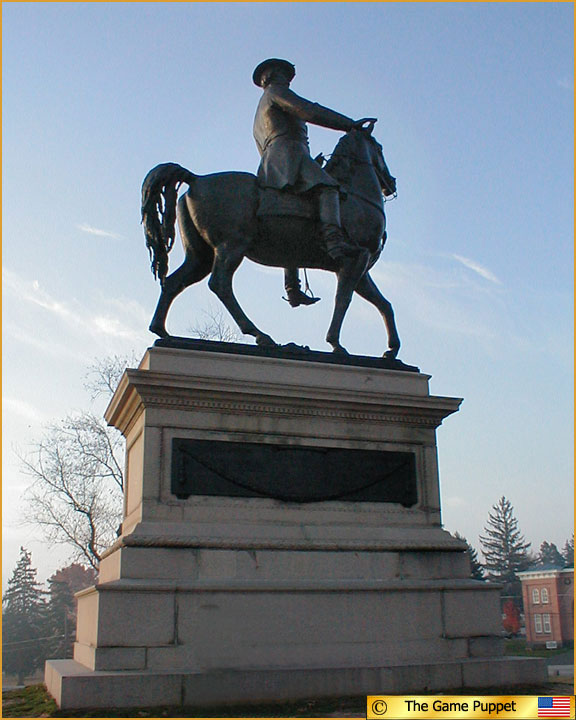
General Longstreet (CSA)
Pitzer Woods, Gettysburg, PA.
Pitzer Woods, Gettysburg, PA.
General Hancock (USA)
East Cemetery Hill, Gettysburg, PA
East Cemetery Hill, Gettysburg, PA
John Burns was in the War of 1812 and near seventy years of age. He took an old State musket he had in his house, and started making bullets. When his wife wanted to know what he was going to do. 'Ah' said Burns, 'I thought some of the boys might want the old gun, and I am getting it ready for them. He found a Wisconsin regiment, and asked them if they would take him in. They told him they would, and gave him three rousing cheers.The old musket was soon thrown aside, and a first-rate rifle given him, and cartridges. He killed three rebels to his certain knowledge. When found by rebel forces they asked what he was doing there and he said he was going for help for his sick wife and was wounded and having pity on him they returned him home.

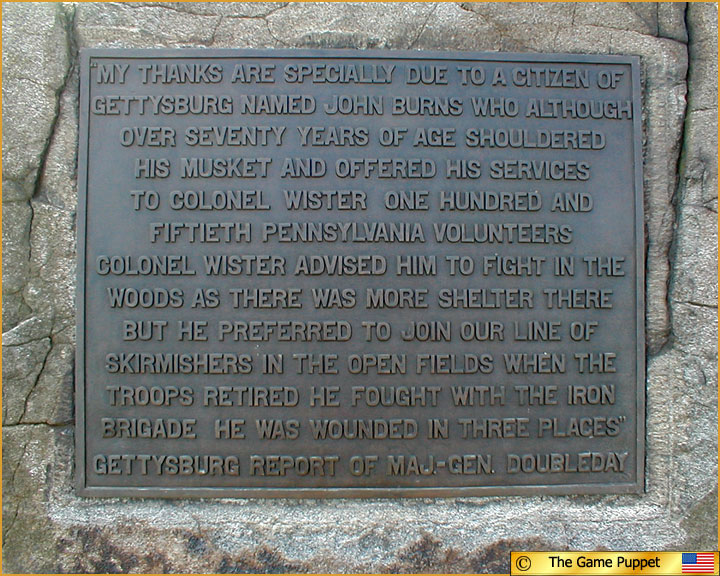
John Burns, Stone Avenue
McPherson Ridge, Gettysburg, PA.
McPherson Ridge, Gettysburg, PA.
He was the oldest civilian
to fight in the battle of Gettysburg.
to fight in the battle of Gettysburg.
If you look at the front of the monument to the 78th and 102nd New York Infantry in the carved boulders below the soldier, and you will distinctly see the carving of a lion's head and paw.
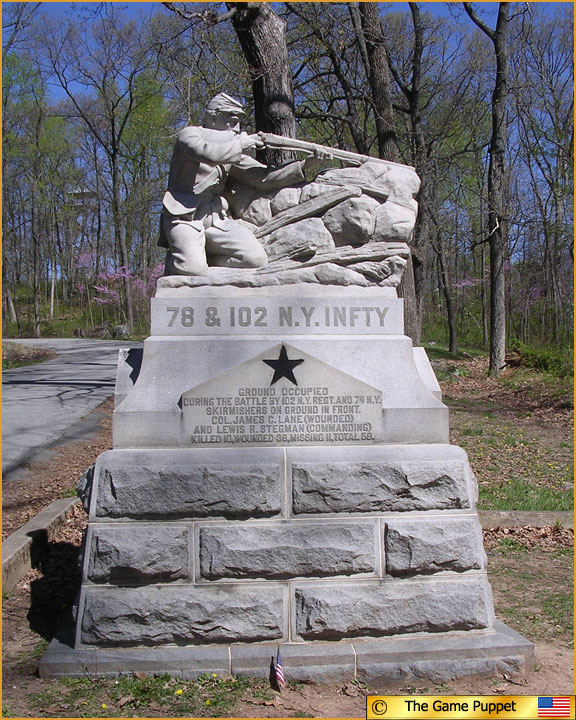

78th and 102nd New York
Infantry, Culp's Hill, Gettysburg, PA.
Infantry, Culp's Hill, Gettysburg, PA.
78th and 102nd New York
Infantry, Culp's Hill, Gettysburg, PA. (closeup)
Infantry, Culp's Hill, Gettysburg, PA. (closeup)
The cannon barrels beneath the Gen. John Buford statue on McPherson Ridge were used by John Calef's Battery. It fired the first Union artillery shot of the Battle under Buford's personal direction. This is stated on a small plaque on the barrel.
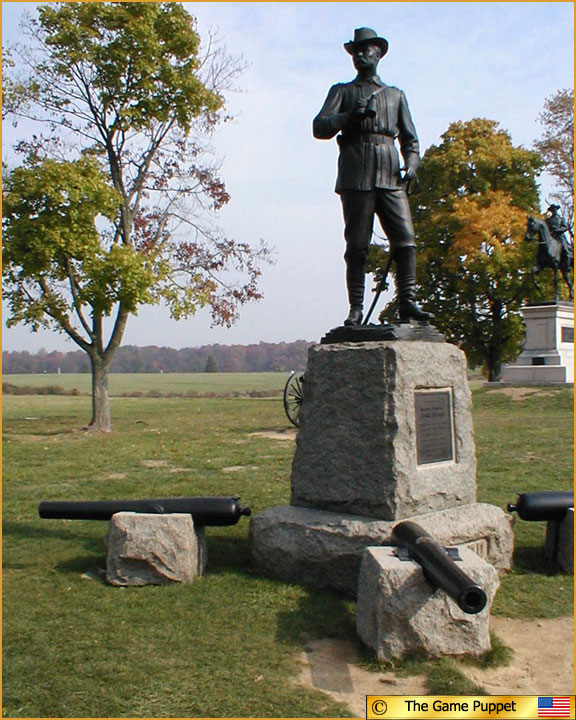
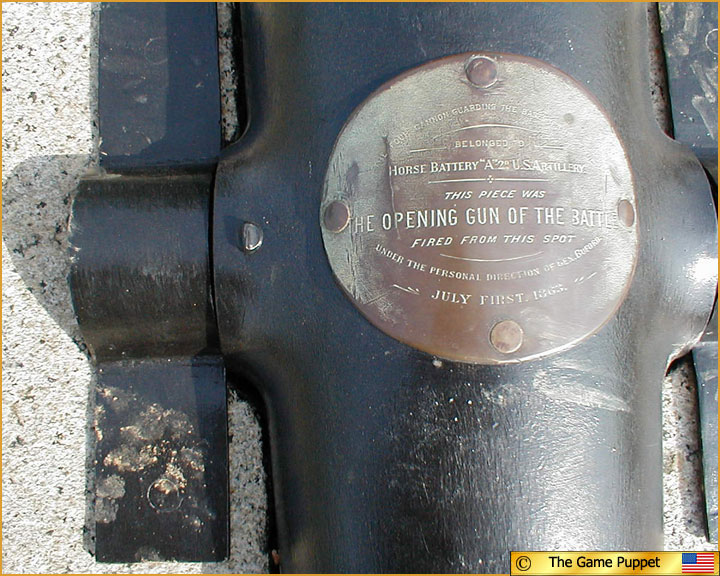
Maj. Gen. John Buford
McPherson Ridge
McPherson Ridge
Maj. Gen. John Buford
McPherson Ridge (closeup)
McPherson Ridge (closeup)
The monuments of Meade and Lee face each other, approximately one mile apart, just as they did on July 1863. Meade on Cemetery Ridge looks west toward Seminary Ridge and Lee is on top the Virginia monument.

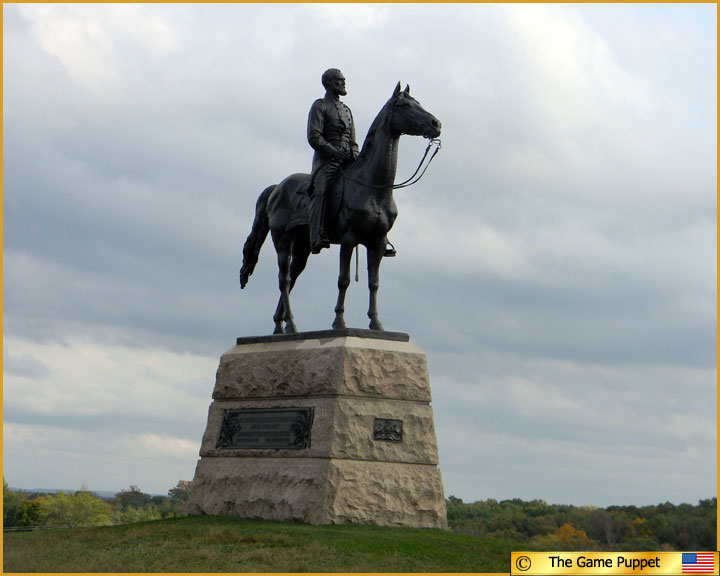
General Robert E. Lee
West Confederate Avenue
West Confederate Avenue
Major General George G. Meade
Hancock Avenue
Hancock Avenue
The carving of the soldier's cartridge box on the monument to the 29th Ohio Infantry, the sculptor carved the "S" in "US" backwards on the plate and it was never corrected.
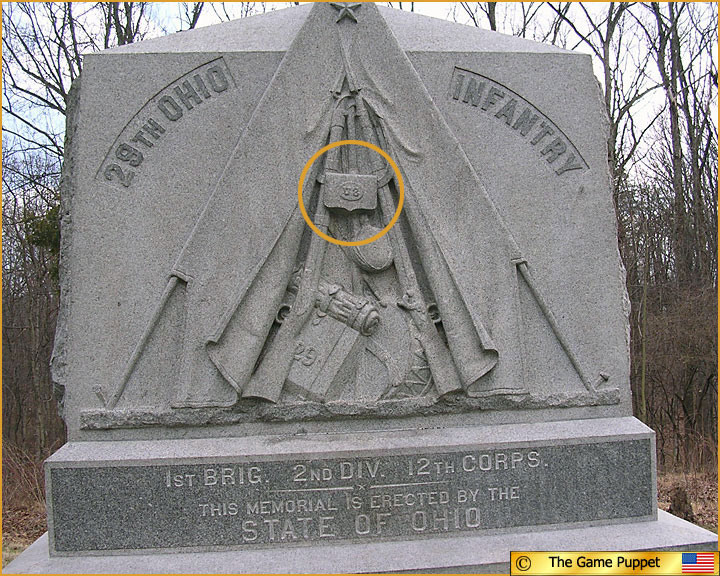

29th Ohio Infantry
North Slocum Avenue, Culp's Hill Swale
North Slocum Avenue, Culp's Hill Swale
29th Ohio Infantry
North Slocum Avenue, Culp's Hill Swale (closeup)
North Slocum Avenue, Culp's Hill Swale (closeup)
After the battle, several markers were placed on the field. Some were made of wood or metal and did not last. The first official monument and the first regimental monument is the 2nd Massachusetts Infantry near Spangler's Spring is erected in 1879.


2nd Massachusetts
Colgrove Avenue, Spangler Meadow
Colgrove Avenue, Spangler Meadow
2nd Massachusetts
Colgrove Avenue, Spangler Meadow (closeup)
Colgrove Avenue, Spangler Meadow (closeup)
There is a Confederate soldier shown on a Union Regimental monument and it is the 66th New York In the rear is a bronze plaque of a soldier from both sides shaking hands. The inscription reads "Peace and Unity."
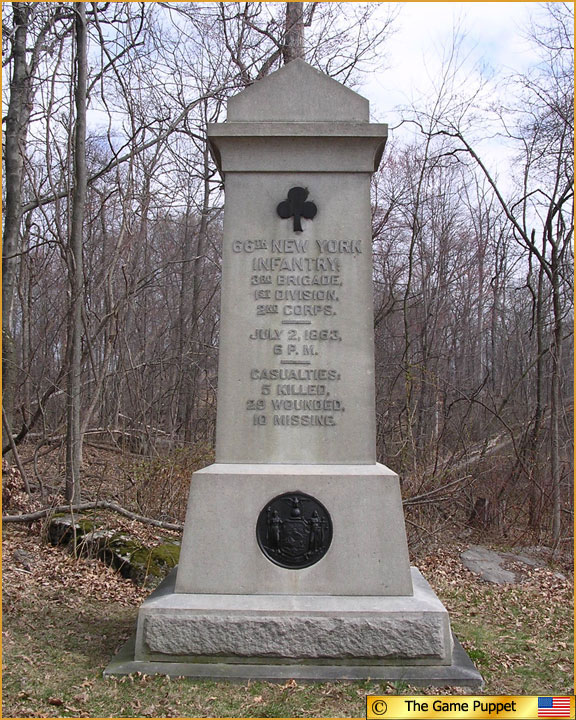

66th New York
Sickles Avenue, east of the Loop (front)
Sickles Avenue, east of the Loop (front)
66th New York
Sickles Avenue, east of the Loop (rear)
Sickles Avenue, east of the Loop (rear)
There is a sculpture of a sleeping small dog on the 11th PA infantry monument. This was the regiment's mascot, Sallie and was given to the regiment as a puppy, and raised with the men, joining in the battles. When there was fighting, She would go to the end of the line of battle, barking as loud as she could at the enemy.

11th Pennsylvania Infantry
Doubleday Avenue, Oak Ridge (rear)
Doubleday Avenue, Oak Ridge (rear)
These Triassic-aged rocks are found in the area of Gettysburg and range from Pennsylvania through New Jersey, New York and Connecticut and southward into Maryland, Virginia, North Carolina and South Carolina. It is the Gettysburg Basin, which extends from near Harrisburg southward into Frederick, Maryland. They are the result of magma coming to the surface and then a cooling process. What is interesting are some of the unique rock formations that resulted.


"Elephant Rock"
Devil's Den, Gettysburg, PA.
Devil's Den, Gettysburg, PA.
"Duck Rock"
Devil's Den, Gettysburg, PA.
Devil's Den, Gettysburg, PA.
After the battle of Gettysburg in 1863 many of the structures were subject to damage such as bullet holes. One of these buildings today (The Farnsworth House) still has the remnants of that battle.

Farnsworth House
This first shot marker was claimed by Marcellus Ephraim Jones, 8th IL Cavalry, and marker placed by he and two others. Others also claim to have fired the first shots of Gettysburg.

First Shot Marker
These are just theories and just some possible explanations. When captured US uniforms were used they would do such things as turn the belt buckle upside down and turn coats inside out to cut the odds of being hit by friendly fire, and deny any allegiance to the Union States. An example of this can be seen in a photo and close-up of the mural on a building located at Coster Avenue, Gettysburg.


Coster Avenue
Coster Avenue (close-up)
A number of units had mascots and on Culp's Hill, the 7th Ohio Infantry Regiment had one. On the back of the monument you will find a rooster.
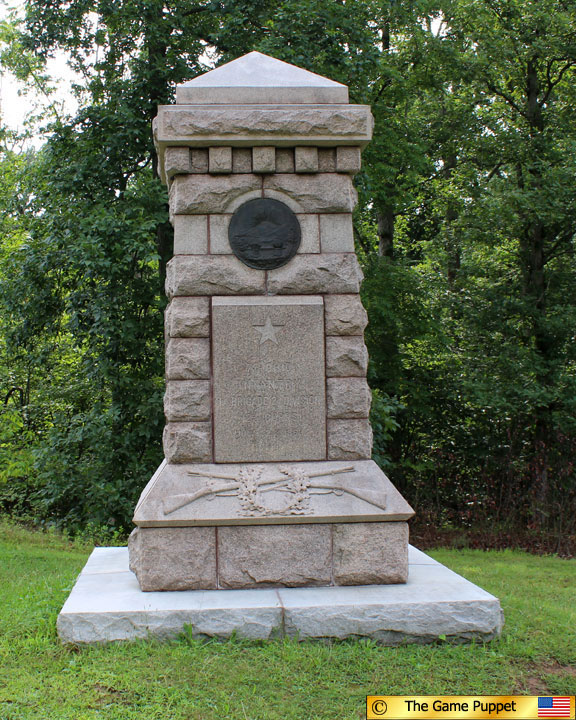
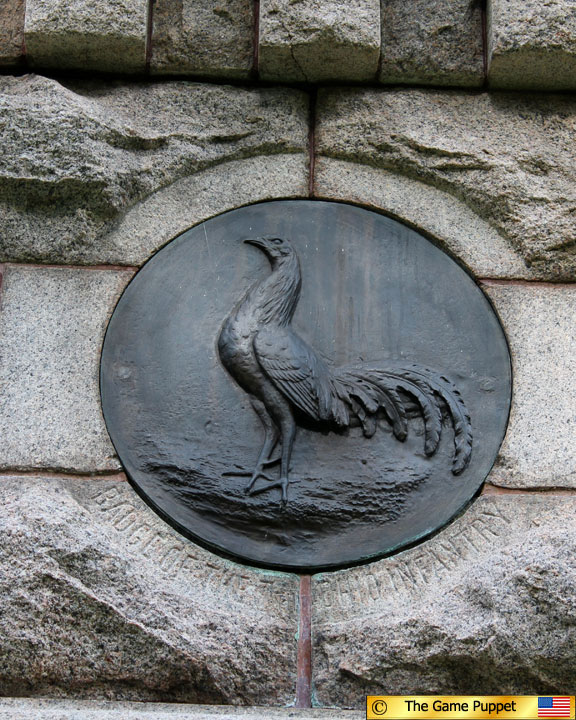
7th Ohio Infantry Regiment
A closeup of the rooster


